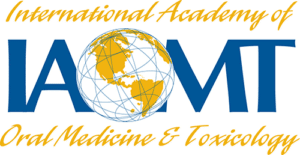What Is Ozone?
Ozone is a special form of oxygen. The oxygen that we breathe is made of two oxygen atoms stuck together (O2). Ozone has an extra oxygen atom (O3). Because of the extra atom, ozone behaves differently than regular oxygen. Having three atoms makes the ozone unstable, so it breaks down into a regular oxygen molecule (o2) plus a single “free” oxygen atom (O). That free oxygen wants to attach to something right away. When it touches bacteria reacts with the cell wall and damages the bacteria almost like popping a balloon.
Ozone destroys the protective shell of germs by oxidation. With antibiotic treatments, there is a risk of resistance or adaptation of the bacterium. Ozone, on the other hand, destroys bacterial structure through oxidation and bacteria cannot adapt or resist.


Tooth Decay Treatment
Tooth decay is caused by oral bacteria that excrete acid after consuming simple carbohydrates. This acid attacks your teeth, removing minerals from the enamel. Enamel is the most mineralized structure in the body, which makes it very strong, but vulnerable to acid attack.
When we treat tooth decay, we apply ozone gas to the tooth and kill oral bacteria present in the area prior to placing a filling or crown. Additionally, bacteria love an acidic environment to live in, but ozone transforms an acidic environment into an alkaline one. Instead of further tooth decay, the environment will encourage the remineralization of the area, with minerals that come either from your saliva or a mineral-rich paste applied to the tooth. Ozone gas can also be used to jump-start remineralization protocols in teeth that are not yet compromised from decay, but have begun to show signs of de-mineralization.
Periodontal Healing
Ozone can also be used to encourage periodontal healing. The primary benefit is that the ozone attacks and kills bacteria in the affected area. It is preferable to other antibacterial treatments because ozone is highly reactive and is localized to the treatment area. There are no systemic effects, and no dangerous byproducts.
Ozone can be used in three different forms for periodontal treatment: ozonated oil, water, or gas. The gas is easily introduced into the periodontal pocket without the need for aggressive procedures to expose the treatment area. Ozone water makes a great pre-treatment rinse. Ozone oil is more shelf stable and patients can use it at home for rinsing and oil pulling. All of these forms are great because they neutralize the acidic environment of the mouth and aid in creating the right conditions for healing of tissue and teeth.
Early Action Makes All the Difference
In all cases, the effectiveness of ozone therapy is improved by early intervention. Remember that ozone is not a magical cure-all, so not all cases will be treatable with ozone. The sooner we can expose the affected area to ozone, the more useful it can be. Ozone is a part of the larger picture of whole body healthcare.

